Deadlock Ranked Mode Analysis: Ranks, Medals & Competitive Play
Updated On: August 23, 2025 by Aaron Connolly
Understanding Deadlock Ranked Mode
Deadlock’s ranked mode sits at the core of Valve’s MOBA shooter. Here, players jump in to test their skills against others on a similar level.
You need to finish 50 matches before you can even touch ranked, and the mode runs all day, every day—no weird time windows.
Purpose of Ranked Mode
Ranked mode in Deadlock aims to deliver fair, competitive matches. You’ll go up against players who are roughly as skilled as you—not just whoever’s online.
The system wants to:
- Match players with similar abilities
- Track skill growth over time
- Offer competitive incentives with ranks and medals
Before ranked mode, matches often felt lopsided. Newbies got stomped; veterans breezed through games.
Valve built the ranked system to fix that. Play 50 games first—that’s the gatekeeper.
This rule keeps brand-new accounts out of competitive right away.
Valve made ranked available 24/7 after people complained about limited hours. Now you can queue whenever you want.
How Ranked Matches Work
Deadlock puts everyone into one big matchmaking pool now. Normal and ranked games pull from the same group, so you won’t wait forever for a match.
Here’s how it works:
- The system checks your skill rating
- It finds 11 other players close to your level
- Teams get built with role and ability balance in mind
Each match affects your ranking. Win, and your rating goes up. Lose, and it drops a bit.
The system looks at how you play, not just whether you win or lose.
Match quality depends on:
- Your current rank and recent games
- How many people are online
- Which roles and heroes everyone picks
The system chooses balance over speed. Sometimes you’ll wait a little longer, but the matches should feel fairer.
Competitive Play Experience
Ranked games in Deadlock just hit different. People actually talk, and teams focus on winning together—not just flashy plays.
You’ll notice:
- Draft phases get more strategic
- Teams coordinate way more
- The skill ceiling jumps up
- Players take objectives seriously
Matches tend to last longer. Ranked players rarely surrender early, and small mistakes can decide the whole game.
Communication matters a lot. Voice chat use goes way up. Players call out enemy moves, sync abilities, and plan team fights.
The medal system rewards steady play. If you keep up good results, you’ll earn medals that show your progress.
Heads up: Ranked can make people anxious. If you only care about rank, it can get stressful fast.
Eligibility and Requirements

Valve sets clear requirements for Deadlock’s ranked mode. These rules keep matches fair and help cut down on toxic behavior.
Minimum Games Played
You have to play 50 regular matches before ranked unlocks. Valve uses this to figure out your skill level and stop brand-new accounts from jumping into ranked right away.
The 50-game rule gives you time to learn heroes, maps, and the basics of teamwork. Most people hit this after 40-60 hours of play.
Once you unlock ranked, you need to play at least seven ranked matches every week to keep your rank. Miss that, and you drop back to provisional rank (Obscurus).
You’ll have to finish seven matches the next week to get ranked again.
This weekly rule keeps the player pool fresh and makes sure ranks reflect how you’re playing now, not months ago.
Behavioural Restrictions
Valve keeps a close eye on player behavior in ranked. If you’ve had recent text bans or communication restrictions, you might run into extra barriers.
The system tracks reports for toxic behavior, griefing, or being unsportsmanlike. If you rack up valid reports, you can lose ranked access for a while.
Spamming false reports can also get you in trouble. Valve’s systems can spot when someone’s reporting just to troll.
Queue Access and Restrictions
Recent changes let you queue for ranked anytime—no more waiting for certain hours.
Normal and ranked matchmaking now use the same system. This means faster queues and more balanced matches.
Your account needs to be in good standing. If you’re new or have recent penalties, you might wait longer before you get into ranked.
Ranking Structure and Progression
Deadlock’s ranking system uses medals, not just numbers. There are 12 ranks, each split into subranks. You need to play seven matches a week to keep your spot—otherwise, you drop back to provisional.
Overview of Medals
We earn medals in Deadlock ranked based on how we do each week, not just every single match.
The system gives out medals at the end of each week if you finish your seven matches.
Everyone starts at Obscurus, the provisional rank. We don’t get a visible medal until we finish the first qualifying week.
Medals push you to play every week, not just once in a while. If you miss your seven matches, you reset to Obscurus, no matter what you did before.
Quick tip: Knock out your seven matches early in the week so you’re not scrambling on Sunday night.
Medal designs dropped after the first ranked week on October 22nd. Each medal shows your top achievement within a rank tier, so you can see progress at a glance.
Weekly Ranking Updates
Rankings update every seven days, based on your performance that week. You’ve got to play seven ranked matches to get a medal.
If you skip the minimum, you reset back to Obscurus and need to re-qualify next week.
This setup stops rank decay from inactivity and keeps things competitive. You can’t just coast at a high rank without playing.
Heads up: The seven-match rule applies even during holidays or big updates.
Your medal shows the highest rank you hit that week. Older weeks don’t carry over, so every week matters.
Subrank Tiers Explained
Each rank splits into six subranks, labeled I through VI. That’s 66 steps from bottom to top.
The main ranks go like this:
- Initiate (starting point)
- Seeker, Alchemist, Arcanist (lower tiers)
- Ritualist, Emissary, Archon (middle)
- Oracle, Phantom, Ascendant (upper)
- Eternus (top of the heap)
Subrank I is the lowest in each rank, and VI is the highest. You move up through I to VI, then jump to the next rank’s I.
Subranks let you see steady progress. Instead of big leaps, you get small steps forward.
Matchmaking tries to pair you with players close to your subrank. That keeps games more balanced.
List of Ranks and Medals
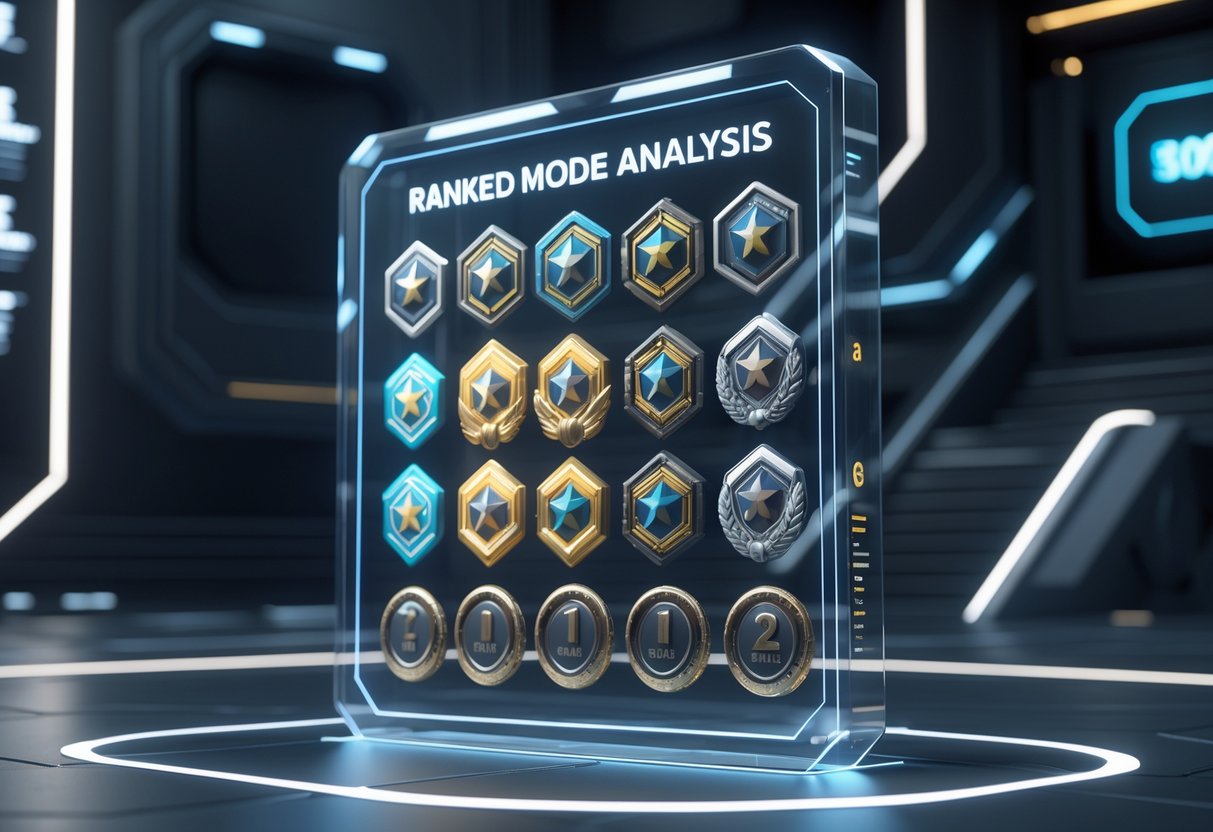
Deadlock skips traditional ranks and uses 11 medals, each with several sub-levels. Everyone starts at Obscurus, and the system updates your position weekly based on how you play—not just on wins and losses.
Obscurus
Obscurus is Deadlock’s starting point for anyone new to ranked. This medal acts as your placement phase while the system figures out where you belong.
You’ll stay in Obscurus until the weekly rank update hits. That happens every Tuesday at 8 PM GMT, when the system crunches all the data from the last week.
Obscurus requirements:
- Play 50 normal matches to unlock ranked
- Finish at least 7 ranked games per week
- You can’t skip this phase
How you play in Obscurus sets up your first real medal. If you crush it here, you might start higher up the ladder.
Initiate
Initiate is the first official medal you can earn in Deadlock. Most players get this after their first week in ranked, if they meet the match requirement.
This medal has four sub-levels to work through. You move forward based on weekly results, not just single wins or losses.
Initiate details:
- First official medal for most people
- Four tiers inside the medal
- Updates every Tuesday
- Needs steady weekly play
Players usually hang out in Initiate for a bit while they get used to how weekly updates work. Doing well here sets you up for the next medals.
Seeker
Seeker marks the second step up in Deadlock’s medal system. You’ll usually reach it after a couple of good weeks beyond Initiate.
Seeker, like the others, breaks down into four sub-ranks. The weekly algorithm checks your recent games, wins, and how you play overall to decide if you move up.
Seeker facts:
- Second medal tier
- Four sub-levels
- Needs consistent, solid performance
- Opens the door to mid-tier medals
Getting to Seeker means you understand the basics of ranked play. At this level, consistency matters more than flashy plays.
Mid to High Tier Medals
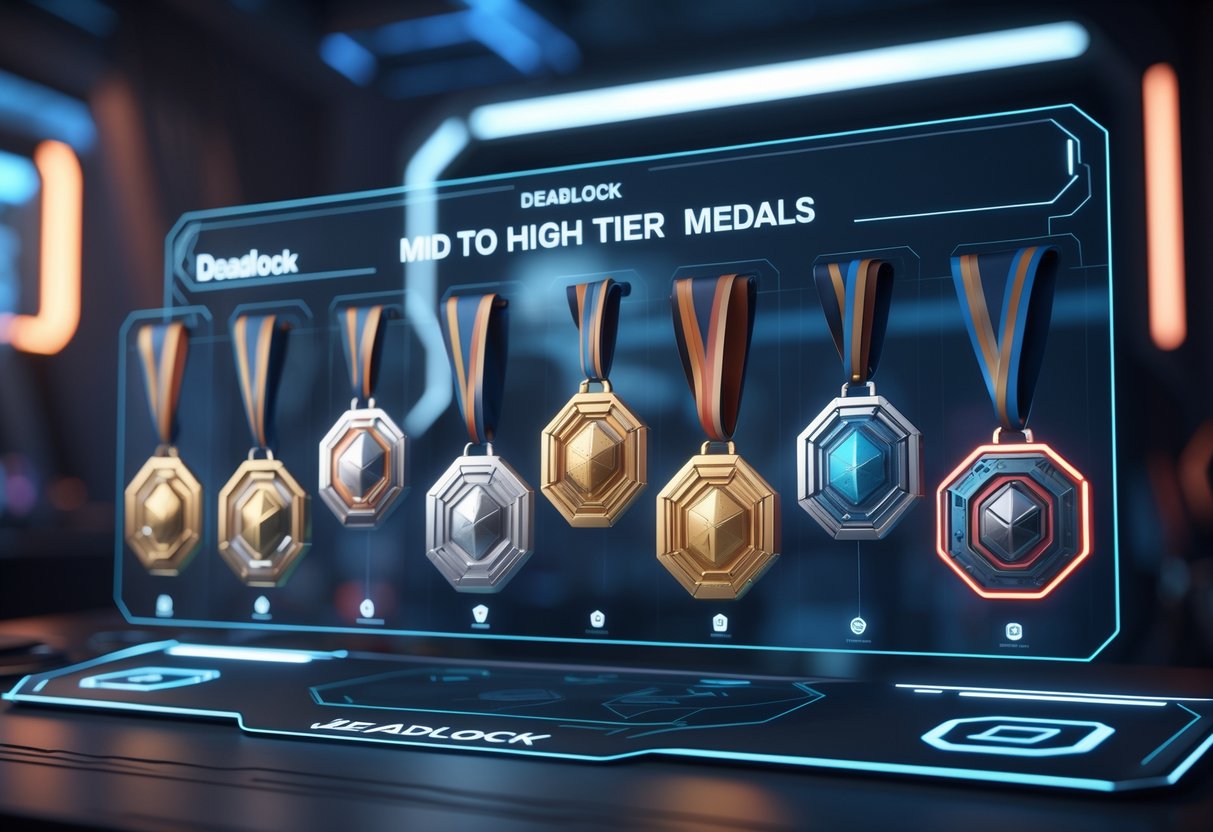
These four medal tiers are where things get spicy. Each step up shows you’re improving and asks more from you every week.
Alchemist
Rank 3 puts you in the middle of Deadlock’s ladder. Players here know the basics and can farm and pick items pretty well.
Map awareness starts to matter a lot at Alchemist. You’ll need to watch enemy moves and listen to your team.
What you need:
- Decent last-hitting
- Know your hero matchups
- Join team fights regularly
- Place wards in smart spots
Moving from Seeker to Alchemist usually takes 15-20 matches. Decision-making under pressure is where people often struggle.
Knowing when to fight or back off makes a big difference at this level.
Communication really starts to matter now. Voice chat helps you set up ganks and grab objectives.
Arcanist
Rank 4 is all about solid competitive play. Arcanist players have strong mechanics and good tactical awareness.
You’ll need about 50+ hours of focused practice to hang here.
Item builds get more situational. You can’t just follow a guide—you have to adjust for the enemy team.
You’ll need:
- Counter-picking skills
- Know when to go for objectives
- Advanced positioning
- Manage your resources well
A lot of people get stuck at Arcanist for a while. The skill gap grows, and you have to play well across multiple heroes.
Teamwork becomes even more important. You can’t just carry games solo anymore.
Ritualist
Rank 5 expects advanced game sense and execution. Players here know how different abilities and items interact.
Matches get more strategic and less about raw mechanics.
Understanding the meta becomes crucial at Ritualist. You need to keep up with patches and adjust fast.
What’s expected:
- Master several heroes (at least 5)
- Pull off complex combos
- Control the map
- Know how to scale late-game
You’ll probably spend 10+ hours a week just to keep this rank. Regular practice is a must.
Opponents start picking apart common strategies. If you want to stay at Ritualist, you’ll need to get creative and adapt on the fly.
Emissary
Rank 6 signals high-level competitive play. Emissary players really know the game inside and out, almost to a professional degree. Only the most dedicated, those who’ve poured hundreds of hours in, manage to reach this tier on a regular basis.
At this level, the mental game matters just as much as pure mechanics. Tilt management and keeping your focus steady often decide who wins. Sometimes, a single bad choice can throw the whole game.
Elite Requirements:
- Frame-perfect execution timing
- Advanced team coordination
- Meta prediction abilities
- Consistent clutch performance
When you hit Emissary, queue times usually get longer. Not many players reach this high, so the pool shrinks fast. You’ll run into semi-pros or streamers pretty often.
Most players who reach Emissary rely on coaching or deep replay analysis. Improvement turns into a systematic process, not just casual practice anymore.
Prestige Ranks
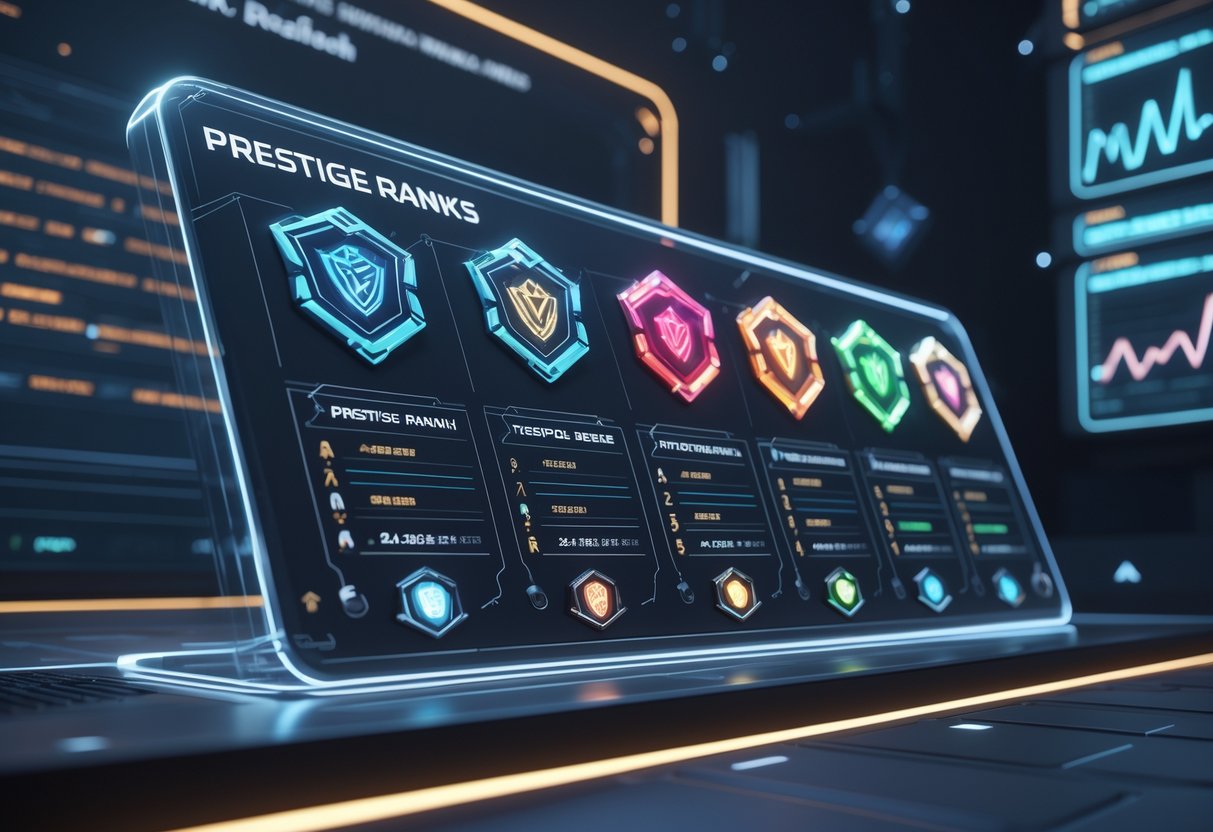
These top-tier medals go to the most skilled Deadlock players. Each prestige rank tightens matchmaking rules and ramps up the competition as you get closer to the very top.
Archon
Archon is where you break into prestige territory in Deadlock ranked. Players here show solid game knowledge and reliable mechanical skill across several heroes.
The competition gets noticeably tougher at Archon. You’ll start facing opponents who get advanced positioning, timing, and team play. Little mistakes that might slip by in lower ranks get punished fast.
Party restrictions kick in at Archon. Groups of three high-skill players (Archon and above) can still queue together, but bigger parties aren’t allowed. This keeps matches fair and stops coordinated teams from steamrolling solo players.
Your hero MMR starts to matter more at this point. The system tracks how you perform with each character, so if you swap to someone new, you might get easier matches until you prove you can handle them.
Oracle
Oracle players sit at the upper end of Deadlock’s competitive ladder. Here, game sense and decision-making start to matter more than just raw mechanics, though honestly, you still need both to win regularly.
At Oracle, matches have more complex team fights and strategic layers. Players coordinate ultimates, control objectives, and rarely mess up their positioning. The skill gap between individuals shrinks, so teamwork becomes everything.
The MMR system weighs matches more carefully here. During off-peak hours, when fewer people are online, the system changes how much your rank shifts to account for possible imbalances.
Hero specialisation really pays off at Oracle. Most players focus on mastering three or four characters instead of trying to play everyone. Because hero MMR is tracked separately, your main picks might reach Oracle while your new heroes lag behind.
Phantom
Phantom rank is where the elite play in Deadlock. These players have mastered advanced mechanics, nail their timing, and have game awareness that stands out from the crowd.
Competition at Phantom is fierce. Every opponent knows optimal builds, advanced combos, and high-level strategies. Matches often hinge on tiny execution details or split-second calls, not big skill gaps.
Leaderboard eligibility starts here in a lot of regions. To show up in the regional top 1000, you need 50 games in the last month and steady performance at this tier or higher.
The three-player party cap sticks around at Phantom. That way, top players can’t stack huge teams and stomp on smaller groups or solos.
Both your core MMR and hero-specific ratings matter a lot here. If you play your main characters well, you might push into the final prestige rank.
Ascendant
Ascendant sits just beneath the absolute top in Deadlock’s ranking system. Players at this level compete at semi-pro standards, with nearly flawless mechanics and sharp strategic thinking.
Strict party limits apply from Ascendant up. Three-player max, no exceptions—keeps things fair and stops coordinated teams from dominating the queue.
Matches here show off Deadlock’s true skill ceiling. Everyone knows the best strategies, pulls off tough combos, and makes those crucial split-second calls under pressure. Mistakes are rare, but when they happen, they’re costly.
Regional leaderboards get extremely competitive at Ascendant. To keep your spot, you need to play at least 20 games per hero each month for hero-specific rankings, plus 50 total games for the core MMR list.
The matchmaking system checks match quality closely at this rank. If you play during off-hours, those games affect your rating less than the balanced matches you’ll find at peak times.
Top Tier: Eternus
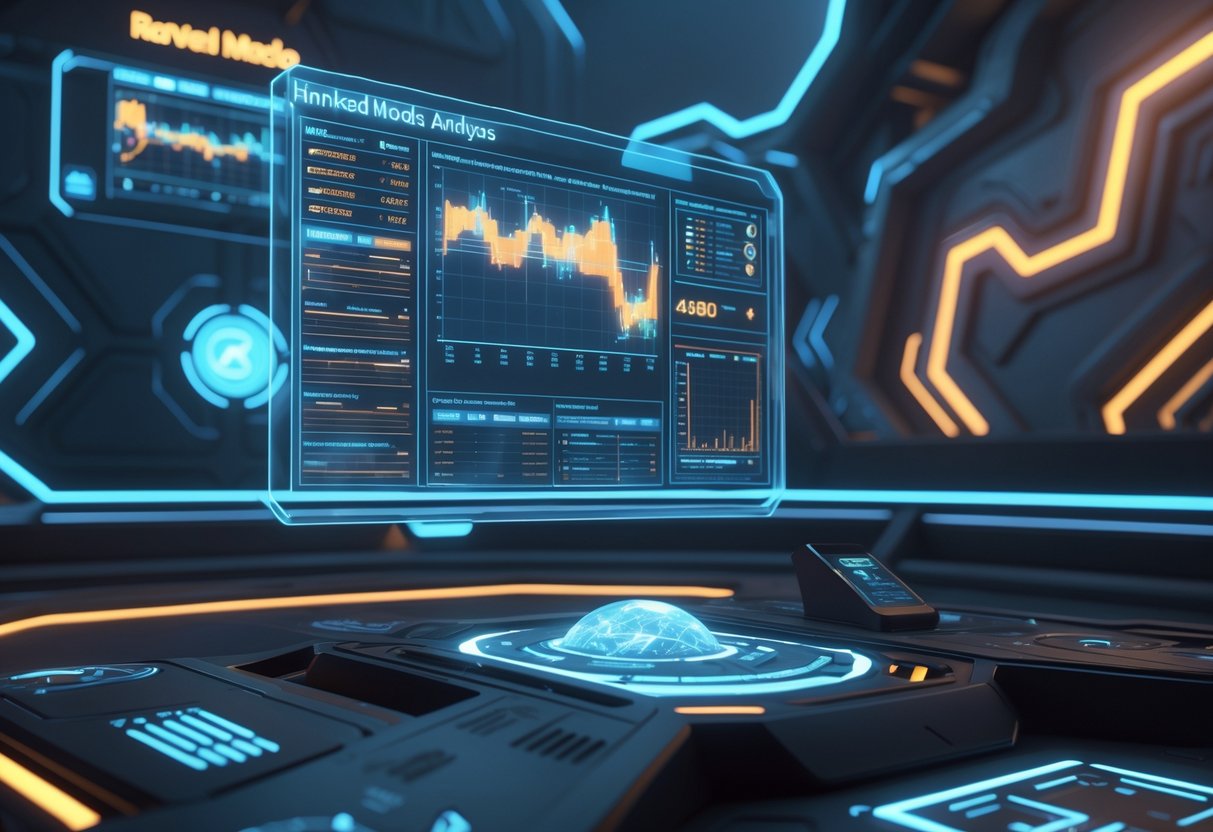
Eternus is the very top medal in Deadlock’s ranked system. Players here show off exceptional skill and game knowledge, making any character work at their best.
Ivy totally dominates Eternus with a wild 57.7% win rate. Those recent buffs really boosted her abilities and made her even better in team comps.
Warden sits comfortably in second place with a strong 55% win rate. His flexibility and ability to control the battlefield make him a go-to for top players.
| Hero | Win Rate | Key Strengths |
|---|---|---|
| Ivy | 57.7% | Enhanced abilities, team synergy |
| Warden | 55% | Versatility, battlefield control |
These heroes shine at Eternus because skilled players squeeze every drop out of their complex mechanics. Down in lower ranks, simpler characters usually rule, but at the top, players master advanced strategies.
The difference between Eternus and lower medals really shows when you look at hero effectiveness. Some heroes that struggle down low suddenly become powerhouses in the hands of experienced players.
Quick win: If you’re aiming for Eternus, focus on mastering Ivy or Warden. Their stats don’t lie—they’re strong picks for a reason.
Most Eternus players have hundreds of hours under their belts. They get positioning, timing, and team play at the highest level.
Match Scheduling and Queue Times
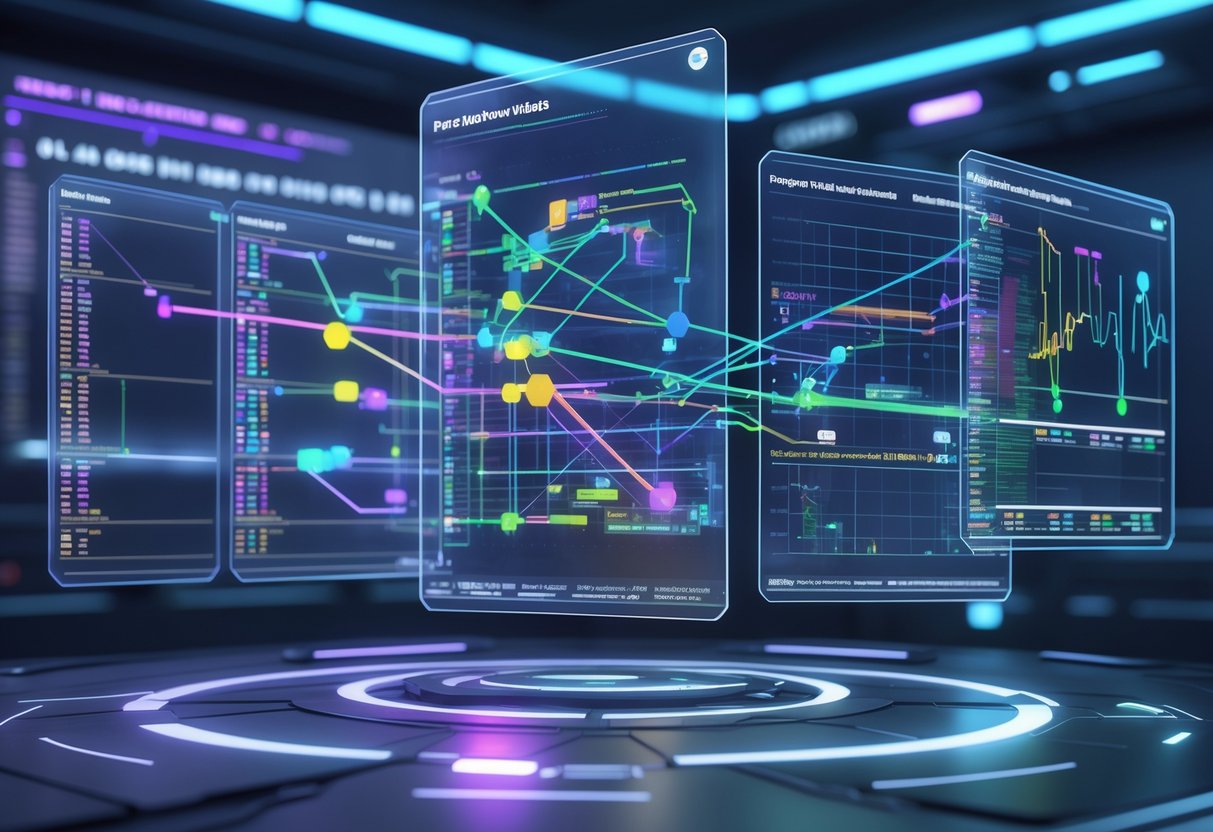
Deadlock’s ranked mode runs non-stop, 24/7. Regional servers and population size shape queue experiences depending on your time zone. Valve got rid of the old time-slot limits that used to restrict when you could play competitively.
Time Slot Selection
Deadlock ditched scheduled time slots for ranked matches. Players pushed for it, and the devs switched to full-time access.
Before, ranked queues only opened during certain windows each day. If your work or class schedule didn’t line up, tough luck—you just had to wait.
Current system perks:
- Queue up anytime, day or night
- No more waiting for a time window
- Shift workers and students get better access
- International players have more flexibility
Now, you can jump into ranked whenever you want. Sure, peak hours still exist, but nothing’s stopping you from queuing up at 3AM if that’s what works.
Changing Queue Times
Queue times swing a lot depending on your rank and the hour. Higher ranks wait longer since the matchmaker searches for equally skilled players.
Average queue times by rank:
- Initiate to Alchemist: 2-5 minutes
- Arcanist to Ritualist: 3-7 minutes
- Emissary to Oracle: 5-12 minutes
- Phantom and above: 10-25 minutes
Solo players usually get matches quicker than groups. If you turn on “mm_prefer_solo_only true” in the console, you’ll only face other solo queuers, but expect wait times to jump.
Heads up: Hero-specific MMR can affect queues. If you’re learning a new hero, you’ll get easier matches, but the system will take longer to figure out your skill.
Peak gaming hours (7-11 PM local time) offer the fastest queues. If you play early in the morning or late at night, especially at high ranks, be ready to wait.
Regional Differences
Each region has its own matchmaking pool, so queue experiences can feel pretty different. North America and Europe usually have the biggest player bases and the fastest matches.
Regional queue details:
- North America/Europe: Shortest waits, busiest in the evenings
- Asia: Large player base, but peak times shift due to time zones
- South America/Oceania: Longer queues, but stable during their own peak hours
Valve’s system picks the server with the best ping for you. You’ll only match with players on your regional server, so cross-region lag isn’t an issue.
Sometimes, queue times spike during local holidays or big esports events when players get distracted. In smaller regions like Oceania, top ranks like Phantom and Ascendant can mean really long waits, since fewer players reach those levels.
The leaderboard tracks the top 1,000 players per region, so the competition density changes a lot depending on where you play.
System Rules and Player Behaviour

Deadlock keeps behaviour standards strict using targeted restrictions and a reporting system. They focus on good standing requirements and monitor report misuse pretty closely.
Solo Queue Enforcement
When Deadlock launched competitive mode, they made everyone queue solo for ranked. The idea was to keep things fair and stop stacked teams from running over solo players.
The November 2024 update changed all that. Now, you can queue in any party size for every match—there’s just one big queue for everyone.
To keep things balanced, the game uses MMR adjustments. If your party mixes players with very different skill levels, everyone in the group gets reduced MMR gains.
High-skill restrictions still exist at the top. If you’re Ascendant 1 or higher, you can only party with up to two other high-ranked players (instead of just one teammate like before).
If you only want to play with other solo players, Deadlock has a console command (mm_prefer_solo_only) that matches you up with other solo folks.
Handling Reports and Sanctions
Good behaviour standing is absolutely required for competitive features. The system tracks stuff like harassment, griefing, and abusing the report system.
Text bans and other behaviour penalties block players from ranked matches until they clean up their act. These can range from chat bans to full suspensions from competitive queues.
The reporting system has checks to prevent report abuse. If you spam false reports or misuse the system, you can get hit with reduced report power or temporary restrictions.
Valve reviews behaviour patterns to spot real misconduct, not just players venting after a rough match. They require multiple reports from different people before handing out serious punishments.
Behaviour scores update regularly based on recent games and community feedback. If you fall below the bar, you have to show better conduct over several matches before you get full access again.
Ranking Algorithm and Performance Metrics

Deadlock’s ranked mode uses a pretty advanced algorithm. It checks five main performance areas and recalculates rankings every week. To climb the ladder, you need to stay consistent in damage output, kills, objective focus, team support, and assists.
Rank Calculation Mechanism
Deadlock’s ranking algorithm puts damage dealt at the top of the list for climbing ranks. If you keep landing at the top of the damage charts, you’ll move up way faster.
Kill-to-death ratios come next in importance. Racking up kills pushes your rank higher, but if you die a lot, you’ll notice your progress slow down. The system tries to balance raw skill with smart, impactful play.
Critical target damage sits in third place. This stat tracks how well you hit key objectives during split pushes and big team fights. If you’re the type who focuses on important targets, you’ll get a solid boost in the rankings.
Healing matters too, especially if you play support characters like McGinnis or Lady Geist. Healing helps your team, but the algorithm puts it fourth on the list.
Kill assists have the least impact on your rank. Sure, helping the team is great, but assists alone won’t really move the needle for your ranking.
Weekly Match Requirements
Every Tuesday, Deadlock’s ranked system recalculates player positions by looking at last week’s performance data. This keeps things competitive and always changing.
You’ll need 50 standard match wins to unlock ranked mode. After that, you must play at least 7 ranked games to get your first medal ranking.
The algorithm doesn’t just tally up wins and losses. It checks your stats across all five metrics every match. So, even if your team loses, a strong personal performance can soften the blow to your rank.
Players who keep up high damage and focus on objectives usually climb steadily. If your performance goes up and down, your rank might swing quite a bit after the weekly reset.
Medal Rewards and Profile Display
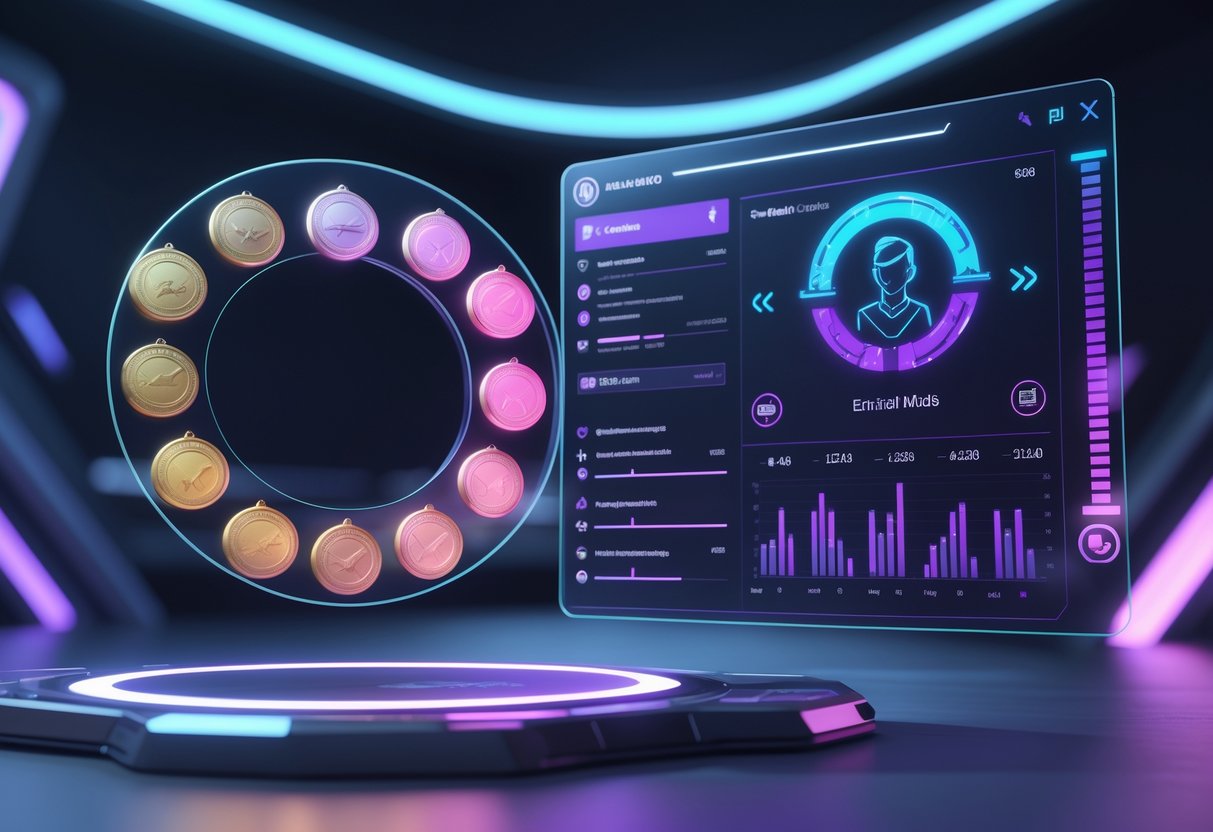
Deadlock’s medal system gives you visible rewards for ranked achievements. These medals show up right on your profile and update weekly, not just once per season.
Profile Badge Visuals
The medal you earn appears as a badge on your profile for everyone to see. When you hover over someone’s profile in a match, you’ll spot a small rank icon that shows their current skill level.
You’ll also see your medal next to your hero icon on end-game stats screens. This lets teammates and opponents get a quick sense of your rank without digging through profiles.
Deadlock has 12 medal tiers:
- Obscurus (unranked)
- Initiate through Eternus (11 ranked tiers)
- Each rank splits into six sub-levels (I through VI)
Everyone starts with the Obscurus medal until they finish their first week of ranked matches. Once you get a real rank, your highest medal stays on your profile, even between ranking periods.
This visual system helps players stand out. Higher-ranked medals become bragging rights and show off your competitive achievements.
Medal Update Frequency
Deadlock updates medals every week, not after every match like some other games. You have to play at least seven ranked games that week to get or keep your medal.
Because of this, your rank can jump quite a bit between updates. If you have a great week, you might move up several medal tiers at once.
Here’s how the weekly cycle works:
- Play at least 7 ranked games each week
- Medal updates every Tuesday
- If you skip a week, you’ll show as Obscurus until you play 7 games again
This kind of frequent reset keeps things lively. Players have to keep performing, not just hit a rank and coast.
A lot of people find this more exciting than the usual seasonal systems. On the flip side, if you take a break, your displayed rank disappears until you’re active again.
Evolution of Ranked Mode

Valve has changed Deadlock’s ranked system a lot since launch. It started as a pretty basic competitive mode with limited hours, but now it’s a much more advanced matchmaking system. Normal and ranked queues got merged, and they added things like hero-specific MMR.
Development by Valve
Valve rolled out Deadlock’s ranked mode as a simple system during the playtest phase. Back then, ranked matches only ran at certain times, so you couldn’t queue whenever you wanted.
Players had to play over 50 unranked games before unlocking ranked mode. At first, solo queue was the only option—Valve disabled parties to keep things fair.
Instead of a points system, Valve set up the rank structure with visual “medals.” The ladder runs from Initiate to Eternus, and each tier has six sublevels except the very top.
Valve leaned on their experience from games like Dota 2 and Counter-Strike when building Deadlock’s competitive foundation.
Updates and System Changes
The biggest update combined normal and ranked queues into one. Now, you can play ranked matches at any time—no more limited hours.
Valve added Hero MMR alongside Core MMR. The system tracks your skill for each character, using your 20 latest games to figure out how good you are on that hero.
Badges now update instantly if your MMR changes enough. Before, you had to wait for the weekly reset to see your new rank.
There are new leaderboards for the top 1,000 players per region, both for Core MMR and for individual heroes. To stay on the board, you need 50 games per month for Core MMR or 20 games per hero for hero rankings.
High-ranking players (Ascendant I and up) can now queue in groups of three, not just two. If your group has a big skill gap, you’ll get less MMR per win to stop people from gaming the system.
Frequently Asked Questions
People have plenty of questions about rank visibility, progression tracking, and how to use competitive features. The ranked system has changed a lot, so it’s not always obvious how to check your rank or when you can play competitive matches.
How can I view my rank in Deadlock?
You’ll find your current rank badge right on your player profile in-game. Now, the badge updates instantly if your MMR changes enough to move you up or down.
You don’t have to wait for a weekly update or hit a certain number of games anymore. If you cross the threshold, your badge changes right away.
The game also shows your Hero MMR for each character in your profile, so you can see how the matchmaker rates your skill on different heroes.
Where can I find the distribution of ranks in Deadlock?
Valve hasn’t shared official rank distribution data for Deadlock yet. The game’s still in alpha, so that info just isn’t out there right now.
The ranking system has 11 medals, each with 6 sublevels—from Initiate I all the way up to Eternus ✶.
Without the data, it’s tough to say how many players are in each bracket. Hopefully, they’ll release some stats closer to full launch.
What’s the best way to track my progression in Deadlock’s ranked mode?
Your rank badge updates right away if your MMR crosses a tier line. Tracking progress is a lot simpler now.
The game shows both your Core MMR and your Hero MMR. Hero MMR looks at your last 20 games with each character.
Check your profile to see which heroes you’re best with. The system compares your performance on each hero to your core skill level.
Can you tell me how to access the Deadlock ranked leaderboard?
You’ll find regional leaderboards for North America, South America, Europe, Asia, and Oceania. Each one lists the top 1,000 players.
There’s a Core MMR leaderboard and separate ones for each hero. You need 50 games played in the last 30 days for Core MMR.
For hero leaderboards, play at least 20 games on that hero in the past 30 days. These requirements keep the rankings full of active players.
Has the ranked mode been removed from Deadlock recently?
Nope, ranked mode hasn’t gone away, but it looks different now. As of November 21st, 2024, there’s only one queue—every game is ranked.
Before, there were separate normal and ranked queues with set hours. Now, you can play ranked matches whenever you want.
Every match affects your MMR and rank. There’s no more split between casual and competitive games.
At what times does Deadlock ranked mode usually go live?
Ranked mode now runs 24/7—no more weird time restrictions to worry about.
The old system used to lock ranked behind certain hours. You’d only get in Monday to Friday from 4pm to 10pm, or on weekends from 11am to 10pm.
Now, the system keeps an eye on how many players are around. If you’re queuing up at 5am, matches might matter a bit less for your rank.

